HTML
--> --> -->To meet the requirements of the calibration of WFCTA to effectively select good shower events and correct the raw data, as well as to improve the quality of the data and decrease systematic errors, it is of primary importance to investigate the variation of extinction coefficients from the surface atmospheric aerosol over LHAASO.
LHAASO (29°21′31″N, 100°08′15″E) is located in the east-south of Tibetan Plateau, and the western Sichuan Province. This region is mainly covered by the alpine grassland in summer, and by snow during cold winters. In the Tibetan Plateau, the atmospheric aerosols are usually taken as a whole and the geographical range is
2
2.1.Longtin model
The Longtin model was developed by David R. Longtin et al., and it is actually a wind-dependent desert aerosol model, firstly applied in the Air Force Geophysics Laboratory. In this model, mineral dust particles are separated into three major components depending on their composition, using different log-normal size distributions and sets of indices of refraction for each component. The components include carbonaceous particles, water soluble particles, and sand. The sand component consists of two kinds of particles, pure quartz and quartz contaminated with a small amount of hematite (iron oxide, Fe2O3). Local wind conditions provide the mechanism to inject and transport aerosols, while wind also provides a mechanism for the generation of additional aerosols by a sandblasting process. The change of size distribution and mass concentrations of the aerosols that are injected into the air is a result of wind erosion. In this model, the volume (mass) of the water soluble and carbonaceous particles remain the same as that for background condition, in which the volume fractions for carbonaceous particles, water soluble particles, and sand were calculated to be 0.299, 0.001, 0.70, respectively, using information on particle concentration and the volume of the single particle. The extra mass loading due to the wind arises from sand. The mass loading equation is the basis for the wind speed dependence, which is expressed as follows. $ c = 52.77 e^{0.30 u}, $  | (1) |
| aerosol component | wind speed/ (m·s?1) | size distribution parameter | radius range in Mie calculation/μm | particle concentration/ (particles·cm?3) | |
| mean radius/μm | variance | ||||
| carbonaceous | 0–30 | 0.0118 | 0.301 | 0.0005-100 | 368.509 |
| water soluble | 0–30 | 0.0285 | 0.35 | 0.0005-100 | 3673.889 |
| 0 | 6.24 | 0.277 | 0.05-100 | 0.002 | |
| 5 | 7 | 0.304 | 0.05-200 | 0.007 | |
| 10 | 7.76 | 0.331 | 0.05-300 | 0.015 | |
| sand | 15 | 8.52 | 0.358 | 0.05-600 | 0.034 |
| 20 | 9.28 | 0.384 | 0.05-750 | 0.072 | |
| 30 | 10.8 | 0.438 | 0.05-1000 | 0.339 | |
| 40 | 12.32 | 0.492 | 0.05-1000 | 1.963 | |
Table1.Aerosol size distribution, integral range of the size, and concentration of aerosols' dependence on wind speed.
The Mie scattering calculation for the extinction coefficient, scattering coefficient, and absorption coefficient is performed separately for each component and then weighted according to their volume fraction of the total aerosol. The total coefficient is the sum of different components, as follows:
$ (k_{\rm ext})_{\rm total} = \sum\limits_{i = 1}^3 {(k_{\rm ext})}_i , $  | (2) |
2
2.2.Parameter estimation
Mie scattering occurs when the size of the aerosol particles is close to the wavelength of the incident light. To improve the calculation efficiency with the Mie scattering theory, D $ D_n = \frac{\psi _n ^ \prime (mx)}{\psi _n (mx)} . $  | (3) |
$ a_n = \frac{[D_n(mx)/m+n/x]\psi _n (x)-\psi _{n-1} (x)}{[D_n(mx)/m+n/x]\xi _n (x)-\xi _{n-1} (x)} , $  | (4) |
$ b_n = \frac{[mD_n(mx)+n/x]\psi _n (x)-\psi _{n-1} (x)}{[mD_n(mx)+n/x]\xi _n (x)-\xi _{n-1} (x)} , $  | (5) |
Generally, the extinction efficiency factor
$ Q_{\rm ext} = \frac{2}{x^2}\sum \limits _{n = 1}^\infty [(2n+1){\rm Re}(a_n+b_n)] , $  | (6) |
$ Q_{\rm sca} = \frac{2}{x^2}\sum \limits _{n = 1}^\infty [(2n+1)(|a_n|^2+|b_n|^2)] , $  | (7) |
$ Q_{\rm abs} = Q_{\rm ext}-Q_{\rm sca} . $  | (8) |
$ D_n(mx) = \frac{1}{\dfrac{n}{mx}-D_{n-1}(mx)}-\frac{n}{mx} , $  | (9) |
$ n_{\max} = \left\{ \begin{array}{l} x+4x^{\frac{1}{3}}+1, \ \ \ \ x\leqslant 8 \\ x+4.05x^{\frac{1}{3}}+2, \ \ 8<x<4200 \\ x+4x^{\frac{1}{3}}+2, \ \ \ \ x\geqslant 4200 \end{array} \right. $  | (10) |
$ D_{n-1}(mx) = \frac{n}{mx}-\frac{1}{D_n(mx)+\displaystyle\frac{n}{mx}} , $  | (11) |
The extinction effect of atmospheric aerosol is the superposition of all effects from the aerosol particles in the air. The extinction coefficient
$ k_{\rm ext} = \int _{r_{\min}}^{r_{\max}}Q_{\rm ext}(m,x)N(r) \pi r^2 {\rm d}r, $  | (12) |
$ \frac{{\rm d}N(r)}{{\rm d}\lg r} = \sum \limits _i \frac{N_i}{\sqrt{2\pi}\lg \sigma _i}\exp\left\{-\frac{(\lg r - \lg R_i)^2}{2(\lg \sigma _i)^2}\right\}, $  | (13) |
$ \frac{{\rm d}N(r)}{{\rm d}r} = \sum \limits _i \frac{N_i}{\sqrt{2\pi}\ln (10) r \lg \sigma _i}\exp\left\{-\frac{(\lg r - \lg R_i)^2}{2(\lg \sigma _i)^2}\right\}, $  | (14) |
2
2.3.Theoretical results
The detector on the CALIPSO emits the laser at a wavelength of 532 nm. Under this condition, the complex refractive indicesThe results on the attenuation efficiency factors of the four types of particles are shown in Fig. 1 to Fig. 4, and each extinction efficiency factor exhibits drastic vibration when particle size is small. As the radius of particle is greater than 20 μm,
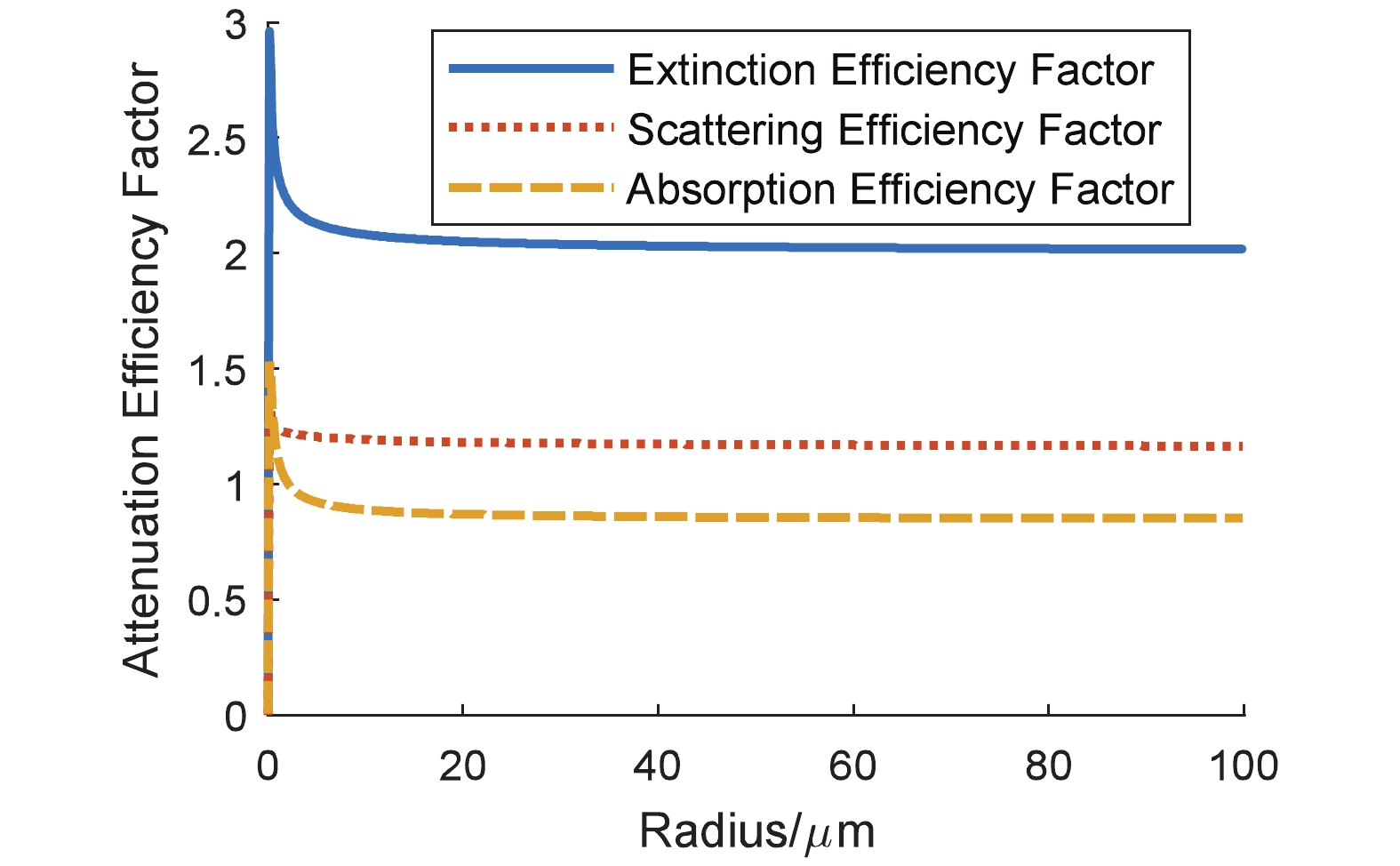 Figure1. (color online) Carbonaceous particle attenuation efficiency dependence on radius.
Figure1. (color online) Carbonaceous particle attenuation efficiency dependence on radius.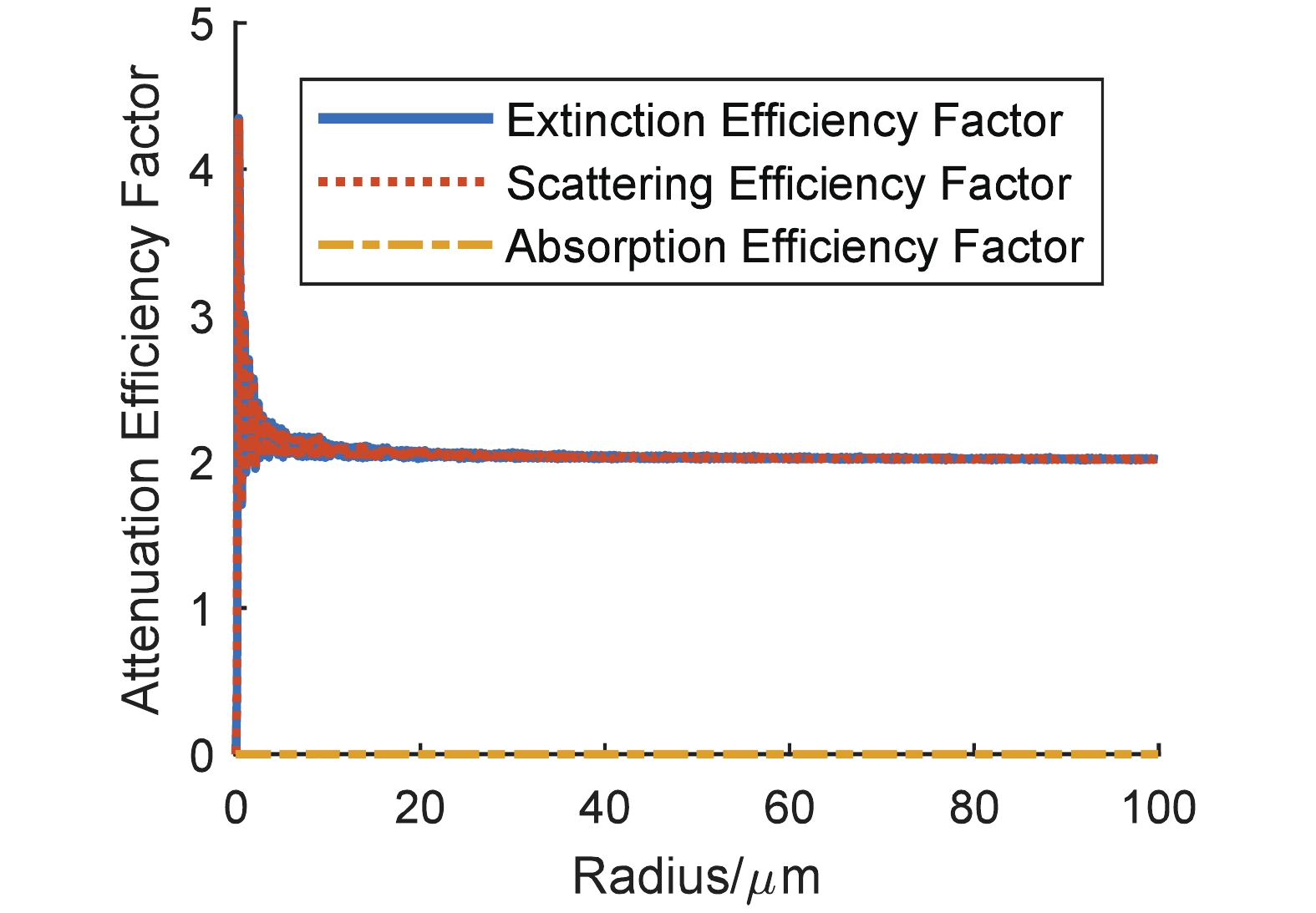 Figure2. (color online) Water soluble particle attenuation efficiency dependence on radius.
Figure2. (color online) Water soluble particle attenuation efficiency dependence on radius. Figure3. (color online) Sand containing pure quartz only particle attenuation efficiency dependence on radius.
Figure3. (color online) Sand containing pure quartz only particle attenuation efficiency dependence on radius.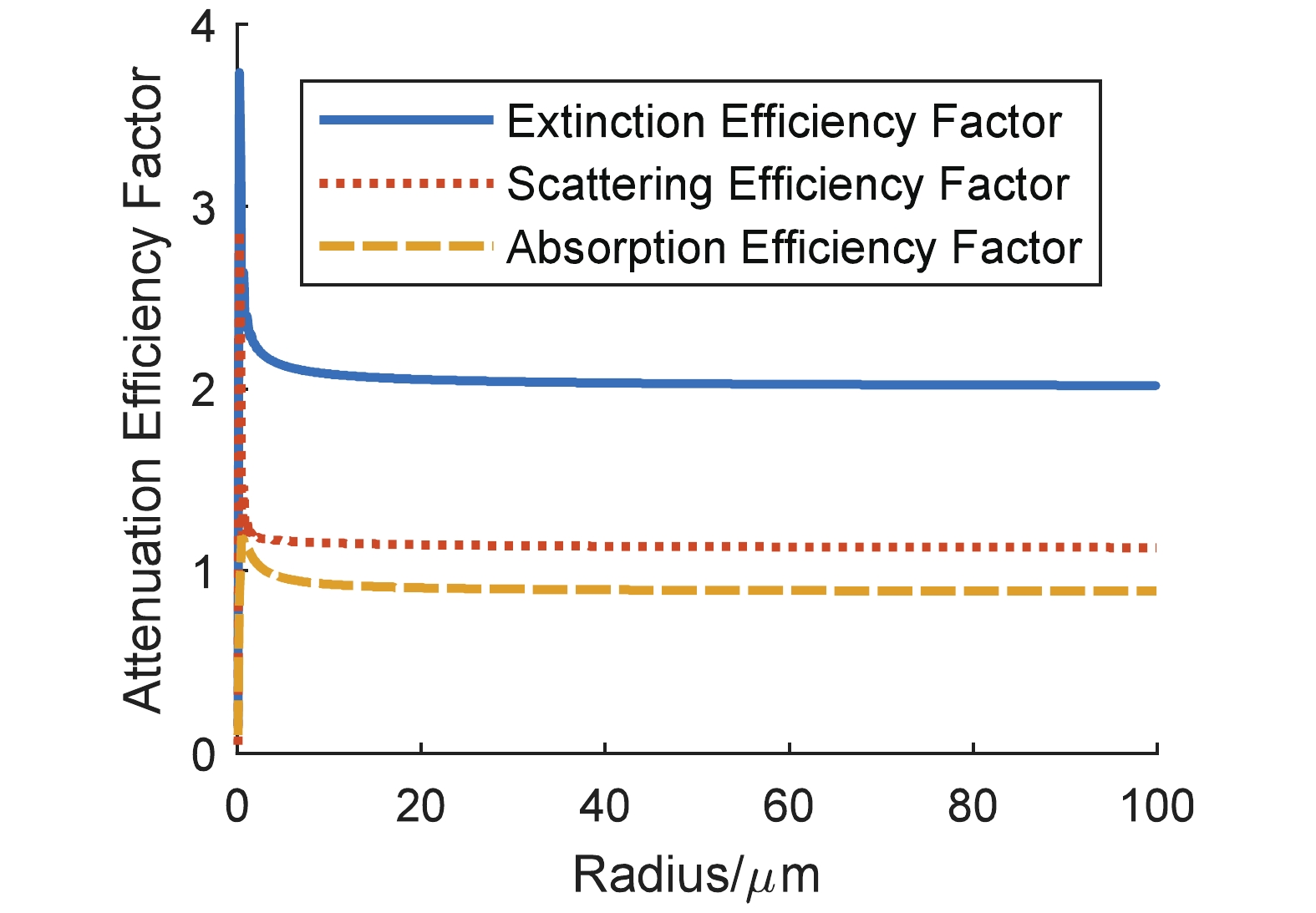 Figure4. (color online) Sand containing 10% hematite particle attenuation efficiency dependence on radius.
Figure4. (color online) Sand containing 10% hematite particle attenuation efficiency dependence on radius.Using Equations (10)–(12) and related parameters, the extinction coefficients, dependent on wind speed and the wavelength of the income light, are presented in Fig. 5. As the wavelength increases, the extinction coefficient of particles decreases. When the wind speed rises, the size and concentration of sand in aerosol particles increase, so the extinction coefficient becomes bigger, too. The higher the wind speed is, the faster the extinction coefficient rises.
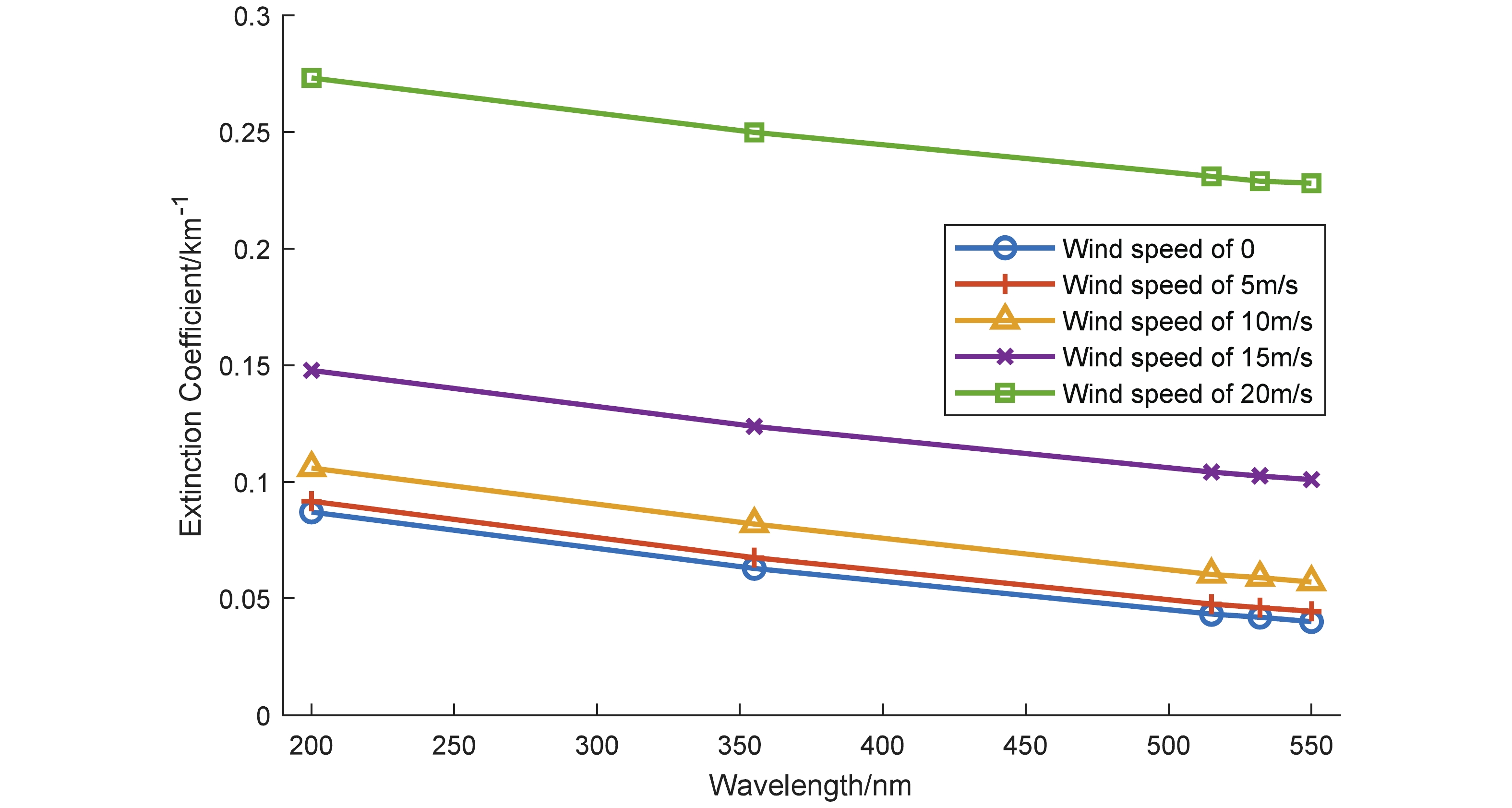 Figure5. (color online) Extinction coefficient of particles at different wavelengths and wind speeds.
Figure5. (color online) Extinction coefficient of particles at different wavelengths and wind speeds.During the period from July 16, 2015 to April 24, 2016, at the site of LHAASO station, a total of 6816 hours included wind occurrence, and this period can be used to calculate the local aerosol extinction coefficient. As the satellite observation data discussed below is collected mainly at around 7 p.m., the time interval of 7 p.m. to 8 p.m. is selected for theoretical calculation. In Fig. 6, the blue curve shows that the extinction coefficient varies with time, whereas the red curve represents the temporal variation extinction coefficient in the case of gust wind speed. The average wind speed is taken as the mean wind speed within one hour, and the gust wind speed is taken as the maximum value of the wind speed within one hour. Under average wind speed conditions, the extinction coefficient changes from 0.0415 km?1 to 0.051 km?1, whereas in the gust wind speed, which is generally high, the extinction coefficient is also high, ranging from 0.0414 km?1 to 0.1041 km?1.
 Figure6. (color online) Theoretical value of night extinction coefficient at the site of LHAASO from July 16, 2015 to April 24, 2016.
Figure6. (color online) Theoretical value of night extinction coefficient at the site of LHAASO from July 16, 2015 to April 24, 2016.The data is selected from 99.6 degrees to 100.6 degrees east longitude and 29.0 degrees to 30.0 degrees north latitude, where the entire area of LHAASO is located. To ensure good quality of data, the cloud-aerosol distinguishing index is required to be within the range of –100 to –50 to better differentiate clouds and aerosols. Meanwhile, the uncertainty of the extinction coefficient should be less than 10, and the aerosol particle type should be determined. The coefficient
The height resolution of CALIPSO is 30 m, and the mean latitude of LHAASO is 4410 m a.s.l.. The average of the extinction coefficients at 4409 m a.s.l. and 4349 m a.s.l. is taken as the actual extinction coefficient of surface atmospheric aerosols above the LHAASO site. Fig. 7 illustrates the extinction coefficient as a function of time, from Oct. 2015 to April 2016 at the surface of the LHAASO site (data from CALIPSO Version 4.1 Level 2). The extinction coefficient at the 532 nm wavelength of the laser between October 2015 to March 2016 is about 0.02 km?1, while it increased to 0.07 km?1 in April 2016. However, the average extinction coefficient at 532-nm wavelength of the laser in the Tibetan Plateau is ~0.0083 km?1 in spring and summer, ~0.0015 km?1 in winter, and ~0.0008 km?1 in fall [6]. Hence, the extinction coefficient at surface LHAASO site is higher than the average in the Tibetan Plateau. Compared with the theoretical value of
 Figure7. (color online) Extinction coefficient during the period from Oct. 2015 to April 2016 at LHAASO.
Figure7. (color online) Extinction coefficient during the period from Oct. 2015 to April 2016 at LHAASO.The relative humidity (RH) in the atmosphere has significant daily and seasonal variations. The hygroscopic growth of optical properties of atmospherics aerosols largely depend on the RH [22–24]. As RH increases, the extinction coefficient grows and favors a more rapid growth when aerosol contains a high content of inorganic water-soluble salts [25–27]. In the Longtin model, the atmospheric aerosols have a water-soluble component, but the influence of relative humidity on the extinction coefficient is not considered.
According to the observations from CALIOP, the studied region's extinction coefficient is higher than the average level of Tibetan Plateau, however lower than the theoretical estimate. This may be related to the particle content in the model. In the Longtin model, the background components represent carbonaceous particles, water soluble particles, and sand. The volume fractions of these three kinds of particles are 0.001, 0.299, and 0.70, respectively. Supposing the total volume proportion of the atmospheric aerosols to the air is the same as that in the background condition, and the wind speed is zero, the extinction coefficient from atmospheric aerosols is almost maintained at ~0.04 km?1 when only the water soluble particles or sand changes are assumed unchanged, and volume fractions of the other two components change in a realistic range. However, the extinction coefficient changes significantly if we assume that the volume fraction of the carbonaceous component remains unchanged, whereas the volume fraction of water soluble particles and sand is altered. We designate the volume fraction of water soluble particles V1, and the volume fraction of sand V2. As shown in Fig. 8, the extinction coefficients depend on the ratio of
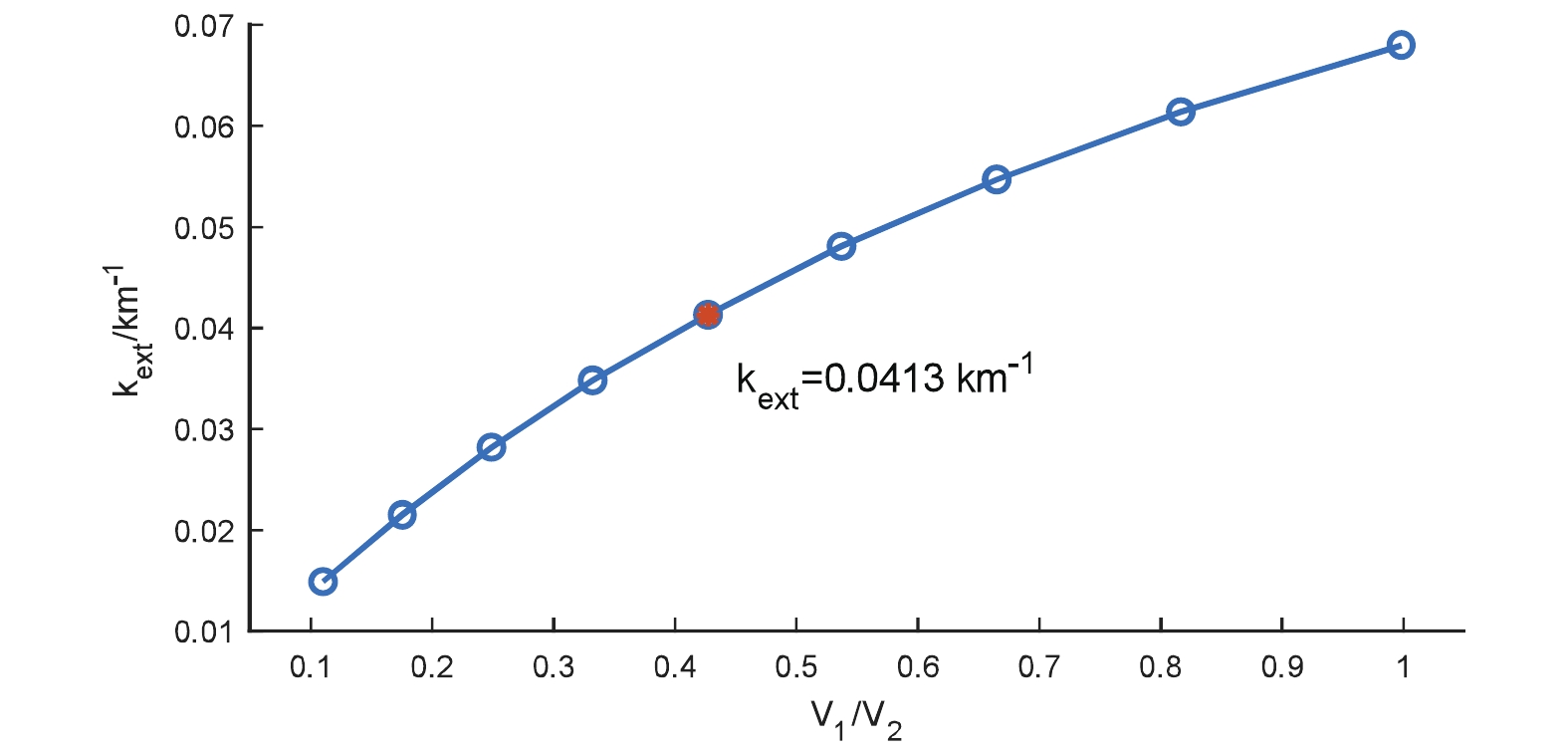 Figure8. (color online) Extinction coefficient dependence on the ratio V1 to V2(V1/V2). V1 represents the volume fraction of water soluble particles, V2 depicts the volume fraction of sand. The red point depicts the extinction coefficient calculated with the volume fraction in the background condition of the Longtin model.
Figure8. (color online) Extinction coefficient dependence on the ratio V1 to V2(V1/V2). V1 represents the volume fraction of water soluble particles, V2 depicts the volume fraction of sand. The red point depicts the extinction coefficient calculated with the volume fraction in the background condition of the Longtin model.The shape, size distribution, mass concentration, RH dependence, wind speed dependence, and other properties of aerosol particles above this site will be studied further in a future study to determine the variations in the extinction coefficient.
The authors would like to thank Dr. Xiaojun Ma and Professor Zhongwei Huang of Lanzhou University for their help in the data analysis of CALIPSO data.
CALIPSO data were obtained from the NASA Langley Research Center Atmospheric Sciences Data Center.
